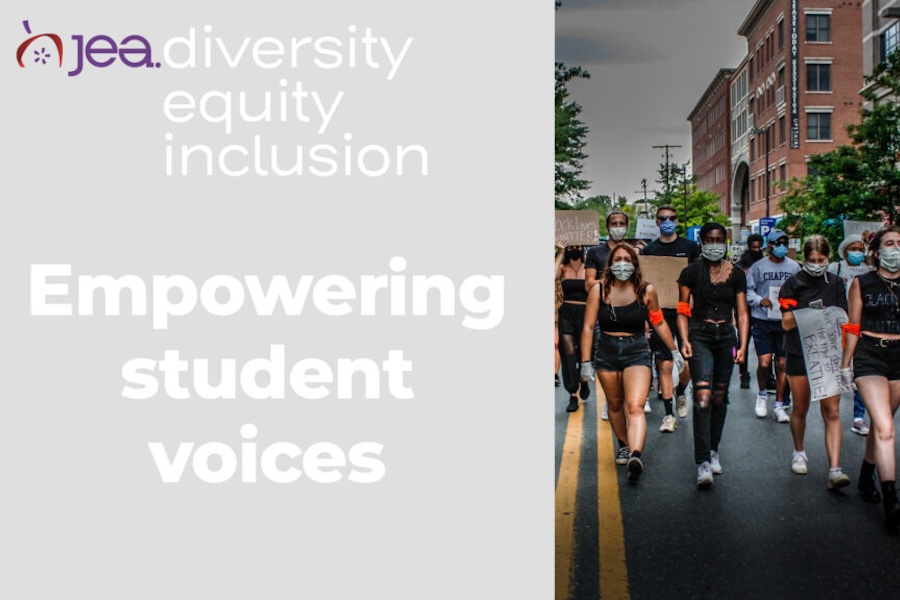Scholastic media empowers students to use their voices to address inequalities and inform their communities

Caption: Photo by Jordan Yates from the article “Through Instagram Account, Current and Former Black Students Offer Scathing Criticism of GDS’ Record on Race.” The article is one of the finalists for social justice reporting Story of the Year from the National Scholastic Press Association.
By Sarah Nichols, MJE
Student journalists use their skills to report on issues around equity, racial equality and underrepresented populations. Using facts and a variety of sources, they inform and educate their audiences through work on student publications while simultaneously benefitting from the opportunity to process their experiences surrounding the inequalities they witness related to race, education, income and more.
“As educators, we aim to lead our students to commit to a critical consciousness of the issues we face in today’s world,” said JEA President Sarah Nichols, MJE. “Student journalists are the ones who can have the most positive impact when it comes to issues surrounding diversity, equity and inclusion. Their work leads to a more informed and empathetic school community and helps move the needle everywhere.”
To share this message beyond the scholastic journalism community, JEA leaders presented a session in November 2021 as part of the NCTE Annual Convention, themed “Equity, Justice & Anti-racist Teaching.” Nichols led a panel with Evelyn Lauer, MJE, and JEA Vice President Val Kibler, MJE, who invited editor Rachel Phengsitthy from Harrisonburg (Virginia) High School to participate.
The presentation, “Scholastic media empowers students to use their voices to address inequalities and inform their communities,” showcased the value of journalistic storytelling to empower students as they navigate issues of identity, intolerance, conflict and truth.
“Through the lens of these powerful topics and issues, the panel was a great way to share practical approaches to 21st-century storytelling through journalism,” Lauer said.
The session* included a collection of news stories, features, podcasts and multimedia packages showcasing recent student work centered on these topics. Teachers and advisers are encouraged to access the set of 37 scholastic media examples from 2021 here for their own classroom use.
In any class or program, students of all experience levels can benefit from these journalistic examples to read and discuss, brainstorm ways to localize these topics and explore strategies to address similar issues in their own communities.
Scholastic media examples from 2021
I hate to say this, but I was bullied for my race
Behind the mask: Hiding my true identity as a queer Asian American
Finding her voice: Speaking up through debate and activism
What does shelter in place mean when shelter is unaffordable?
Addressing intersectionality between minority groups facing and fighting racism
Bisexual student dates while closeted from parents
Income inequality through the Zoom screen
Being actively anti-racist is sometimes uncomfortable
ASB revises insensitive spirit week theme
New free lunch program directly affects low-income students
No place called home: Tackling immigrant struggles in the college application process
A Discourse: Black Lives Matter at FUHSD
Palo Alto community protests against Asian Hate
Restrictive trans athlete bill likely to reach House floor
Women’s History Month Sparks Discussions
Faces of Us: My experiences as an Asian American
Doors open for the homeless: Pandemic hits vulnerable communities
Survivor’s shelter: Supporting domestic violence victims
Closing the Gap, Opening the Opportunity
Editorial: ‘8 Can’t Wait’ is not enough
Social justice reporting
Finalists for Story of the Year, National Scholastic Press Association
*While the video presentation is restricted for viewing by NCTE convention attendees within their conference platform, a copy of the session slideshow is available here for reference.
Lindsay Porter
